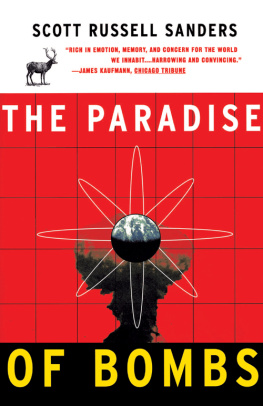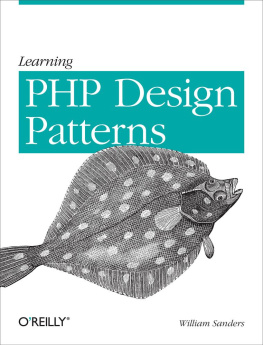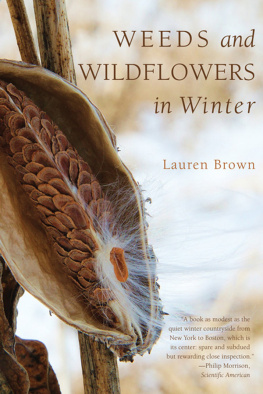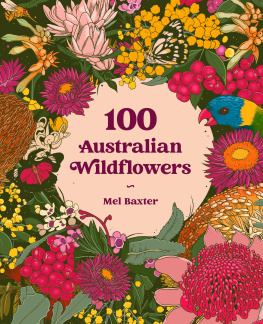Bibliography
Most of the books listed here were consulted in the preparation of this book. Because books go in and out of print all the time, I have made little effort to denote which books may be currently in print. Check with your bookseller.
Most of these books, however, are probably out of print. Yet, most are probably also available from used book dealersits just a matter of finding the one who has what you want. Two good online sources of used books are abebooks.com and amazon.com. Both list the wares of many hundreds of used book dealersliterally hundreds of thousands of titles altogether.
Many used book dealers will also seek out editions you want, and they often advertise in the New York Times Book Review and other literary publications. You can also try the rec.arts.books.marketplace Usenet newsgroup on the Internet; post a message with your want list and keep an eye on the messages that dealers post.
Addison, Josephine. The Illustrated Plant Lore. London: Sidgwick and Jackson, 1985. A great book for legend, literature, and lore of wild plants; written by an Englishwoman, the book covers European plants, but many of them are North American immigrants. Good reading.
Ahmadjian, Vernon. Flowering Plants of Massachusetts. Amherst: University of Massachusetts Press, 1979. A book with 582 pages of black-and-white illustrations; relatively little text. Often seen on the used book market. Good for New Englanders.
Aiken, Senator George D. Pioneering with Wildflowers. Englewood Cliffs, N.J.: Prentice-Hall Inc., 1968. A highly recommended guide to growing wildflowers. Aiken, a former U.S. senator from Vermont, spent many years experimenting with ways of growing native wildflowers. Clear, informal writing style. If not in print, readily available on the used book market.
Anderson, A. W. How We Got Our Flowers. New York: Dover Publications Inc., 1966. Excellent background for both wild-flower and gardening fans. Covers many plant explorers. Fine index.
Angier, Bradford. Feasting Free on Wild Edibles. Harrisburg, Pa.: Stackpole Books, 1972. A good guide for using wild plants as food.
Art, Henry W. The Wild Flower Gardeners Guide. Pownal, Vt.: Garden Way, 1990 and other dates. Art has produced a wonderful series of books, keyed to regions of North America and giving extensive information, including natural history, on 30 to 40 worthwhile species in each area. Texts include color and black-and-white illustrations, sources of seeds and plants, and lists of botanical gardens and native plant societies in the regions. Guides have been published in editions that cover the East, the Northwest, and the Southwest. Recommended.
Attenborough, David. The Private Life of Plants. London: BBC Books, 1995. Fascinating, well-illustrated account of techniques plants use to survive and procreate. 320 pages. Indexed. Recommended.
Bailey, L. H. How Plants Get Their Names. New York: Dover Publications Inc., 1963. A classic. Will help you understand the Latin names of plants. Great list of specific names, but not generic.
Balls, Edward K. Early Uses of California Plants. Berkeley and Los Angeles: University of California Press, 1965. Interesting little 103-page paperback offers lots of history on how California plants were used. Illustrated. Indexed.
Barbour, Anita, and Spider Barbour. Wild Flora of the Northeast. Woodstock, N.Y.: Overlook Press, 1991. Beautiful photos and interesting essay-like observations on the wildflower scene in the Northeast. Not only herbaceous plants but also trees and shrubs are covered. Indexed.
Bernhardt, Peter. Wily Violets and Underground Orchids: Revelations of a Botanist. New York: William Morrow, 1989. Well-written natural history of plants around the world. Color photos. Annotated bibliography. Extensively indexed. Recommended.
Birdseye, Clarence, and Eleanor Birdseye. Growing Woodland Plants. New York: Dover Publications Inc., 1972. A good guide for dealing with shady situations. Lots of information and tips. Clarence, by the way, is the creator of the modern frozen food system; he is the Birdseye of the brand name. Recommended.
Blanchan, Neltje. Natures Garden. New York: Doubleday, Page and Company, 1900. Though her prose is somewhat Victorian and flowery, her observations on the world of wildflowers are enlightening and entertaining. Lots of natural history from this pioneer woman naturalist. Pretty readily available at used or antiquarian bookstores at reasonable prices. Recommended.
Bliss, Anne. North American Dye Plants. New York: Charles Scribners Sons, 1979. Great little guide to using wild plants as dyes.
Braungart, Dale C., and Ross H. Arnett. An Introduction to Plant Biology. St. Louis: C. V. Mosby, 1962. Good introductory textbook.
Britton, Lord Nathaniel, and the Honorable Addison Brown. An Illustrated Flora of the Northern United States and Canada. New York: Dover Publications Inc., 1970. If you are serious about identifying species east of the Rockies, you should have this on hand. While its three paperback volumes are somewhat dated, being a reprint of the 1913 edition, its still an invaluable source. Recommended.
Brown, Rowland W. Composition of Scientific Words. Washington: Smithsonian Institution Press, 1991. If you want a dictionary-like and comprehensive sourcebook on what those scientific names mean, try this. Recommended.
Burgess, Thornton W. The Burgess Flower Book for Children. Boston: Little, Brown and Company, 1923. Stories featuring Peter Rabbit, Jimmy Skunk, and the whole Burgess cast, introducing kids to wildflowers. Illustrated. Indexed. Recommended.
Burn, Barbara. North American Wildflowers. (The National Audubon Society Collection Nature Series), Avenel, N.J.: Gramercy Books, 1992. Lots of color photos, relatively little text.
Burroughs, John. The Writings of John Burroughs. 19 vols. Cambridge: The Riverside Press, n.d. If you are into nature, be it wild-flowers, birds, animals, or just communing, read Burroughs. Sets of his works can be picked up reasonably in used book shops. Of course, individual volumes and collections of essays are also available.
Castleman, Michael. The Healing Herbs. New York: Bantam, 1995. A very detailed guide to 100 healing herbs as well as sundry conditions they and others will treat.
Clute, Willard N. The Common Names of Plants and Their Meanings. Indianapolis: Willard N. Clute & Co., 1942. This book is meant to be read for its information on the many ways plants acquire their names. It is not a dictionary-style encyclopedia of names, though it is fully indexed.
Coffey, Timothy. The History and Folklore of North American Wildflowers. Boston: n.p. 1993. Very comprehensive encyclopedia of American wild plants and their uses; fully indexed; extensive bibliography. Recommended.
Coon, Nelson. The Dictionary of Useful Plants. Emmaus, Pa.: Rodale Press, 1974. Tells the use, history, and folklore of more than 500 plant species. Lots of illustrations. Indexed. Recommended
Coon, Nelson. Using Wild and Wayside Plants. New York: Dover Publications Inc., 1980. More lore from Coon (above). Includes many shrubs and trees. Illustrated. Indexed.
Craighead, John J., Frank C. Craighead Jr., and Ray J. Davis. Rocky Mountain Wildflowers. Peterson Field Guide Series. Boston: Houghton Mifflin Company, 1963. Another excellent Peterson guide. Recommended.
Crockett, Lawrence J. Wildly Successful Plants: A Handbook of North American Weeds. New York: Collier Books, 1977. A guide to wild-flowers that are considered pests; while it tells how to get rid of them, you almost believe that Mr. Crockett would rather keep them around to enjoy. Recommended.










